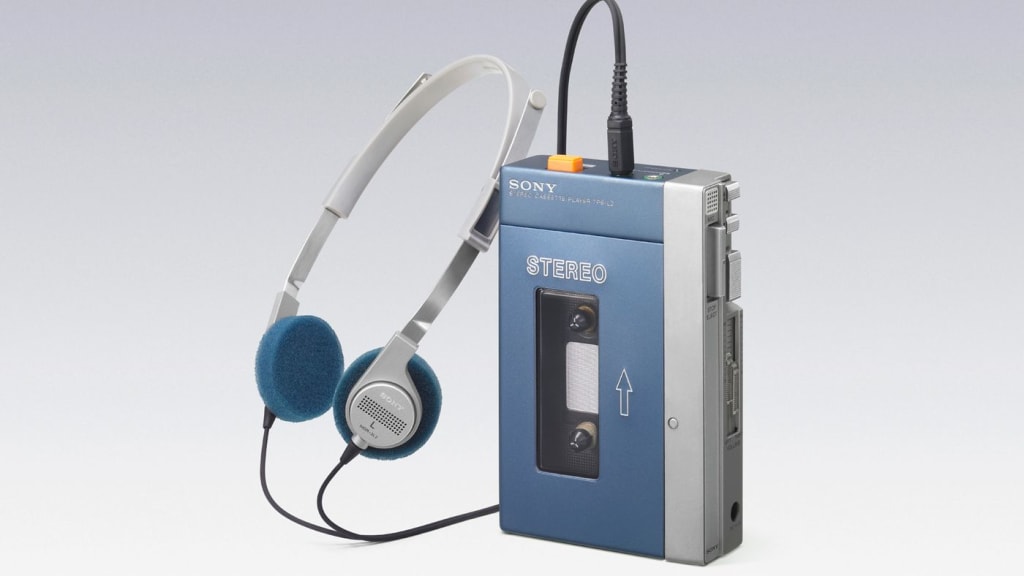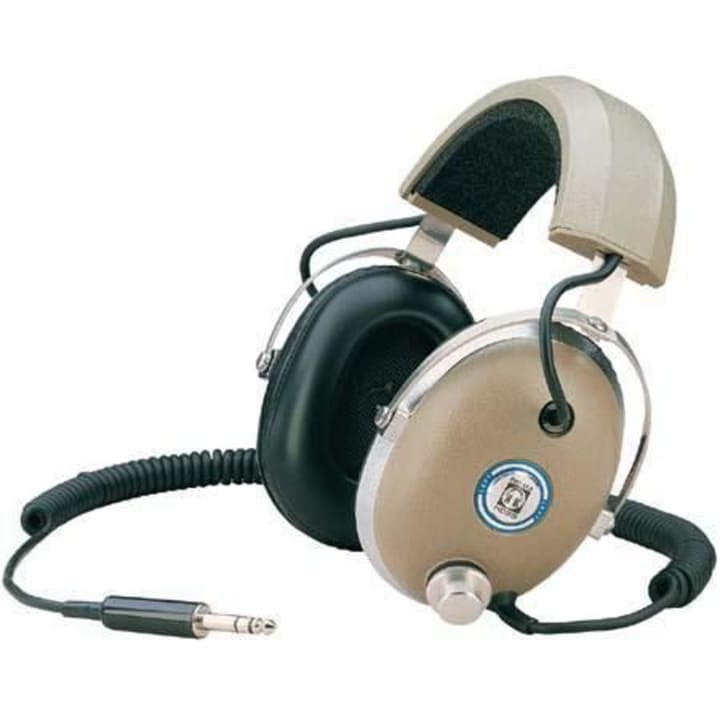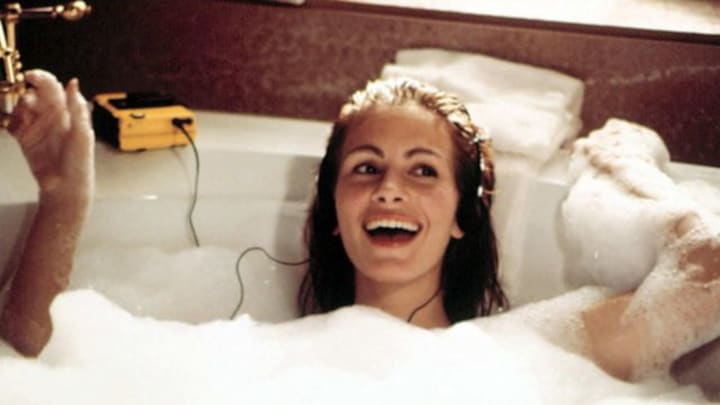Revolutionizing the Way We Listen to Music
Sony introduced the TPS-L2 Walkman in 1979. The first-ever portable music player that changed the music game forever.

With the advent of Smartphones, you have access to millions of songs at your fingertips. It has become way easier for people to listen to Music anytime, any place.
However, this wasn't possible until a decade ago. In the early 1970s, people had cassettes for every song they wanted to listen to which went into huge bulky music players like Boomboxes, portable radios and televisions. These were usually a lot larger than the cassettes itself and were cumbersome to carry around. So the idea of a portable player which is nearly equivalent to the size of cassettes seemed like a fad.
It all started when Nobutoshi Kihara (Co-founder of Sony) wanted to listen to his favourite Opera on his intercontinental plane trips. Being an audio-division engineer he tweaked the old tape recorder that used cassettes to record notes at the time to listen to music.
Seeing this invention and embracing the spirit of innovation, Masaru Ibuka (Co-founder of Sony) said,
“Creativity comes from looking for the unexpected and stepping outside your own experience.”
Consequently, in 1978 when a prototype was built for Nobutoshi Kihara. Sony realized that if they wanted to create a successful portable music player, they needed to innovate and look towards the future while designing products for audiophiles and music lovers.
And that's how the “Walkman” came into being.
The World changed on 1st July 1979 when Sony’s iconic portable cassette player TPS-L2 (Walkman) went on sale. It revolutionized the music industry changing the way people listened to music.
The very first thing was that it offered was portability – you could just carry your Walkman while you’re travelling. The name itself implied that you could now listen to the music while you’re walking around and was considered a boon for music lovers.
The fact that you can now carry a portable music player in your pocket was unbelievable to the people back then. And so, the results of the first-month sales for Sony were disappointing.
When the first Walkman hit store shelves, priced at a hefty 33,000 yen _ $315 in today's money. Some were skeptical because it was different and unfamiliar. The technology itself was not brand new, but the idea of a portable music player without a recording function was unheard of.
However, it didn’t take long for music enthusiasts to recognize the ingenuity of the Sony Walkman. After people used the products and understood the value, things changed. The Walkman turned out to be the best-selling product of Sony, it holds that title even today. Although the sound quality and battery life was not as great as the devices we have today – it was a treat to listen to.
After a disappointing first month when only 3,000 units were sold, sales exploded to eventually hit 1.5 million worldwide for the first model. The second model, the WM-2, which came in red, black and silver, chalked up sales of 2.58 million.
But along with acceptance, this small blue block of tech faced a lot of backlash. Before the Walkman, music was innately social. Listening to music was something that people did as a community. It was the first time technology allowed you to be closed off to the world.
Things took a turn when the Walkman started to be considered dangerous. It seemed there were increased pedestrian accidents, as people were distracted by the Walkman and not paying attention to traffic.
In 1982, Woodbridge Township, New Jersey banned the Walkman from being worn in public. And the ordinance (3-10) is still on the books today.
To counter this Sony came up with the tagline: "There is a revolution on the streets”.
They targeted young couples by modifying the Walkman and adding in two headset jacks labelled "guys" and "dolls" to allow two people to listen simultaneously and a bright orange "hotline" button to lower the volume while the couple chatted.

Headphones played a big role in the success of Walkman. Earlier the headphones were big and clunky. This revolutionized the headphone market as well. The Walkman came along with a lightweight breathable headphone that was convenient to carry around.
Not only the headphones but the cassette tape also took off. 3 years after the Walkman was released in the united states the cassette tapes outsold the vinyl for the first time.
Mixtapes became a big part of growing up and high school culture. It was how teenagers expressed their feelings. People from all over the world exchanged cassettes and understood the music of other cultures.
Sony soon saw the opportunity to tap into the sports market because of the perfect marriage of portable music that went faultlessly with exercise and sports. They launched the bright yellow "Walkman sports” which focused on portability and durability.

Soon they offered different colour variation, Fm/Am and other customization in terms of models, headphones and hence making an audio player a fashion and status symbol. It became an icon for the youth and identity. The idea was that by giving consumers enough variation to the product it still felt personal even though everyone had
still feel allowed then to feel like the product was personal to them even when one has one
By mid-1980 early 90s Walkman had firmly established itself as a cultural icon often taking on starring roles in classic movies of the era.

Over the following four decades, Sony sold more than 420 million "Walkmen" and stopped counting the number of models it had produced when it hit the 1,000 mark, about 20 years ago.
However, technology always evolves. By the time Sony celebrated the Walkmans 10th anniversary a new frontier of technology was on the horizon and once we got to the mid-90s the medium of compact disk appealed more to the public. It was able to hold more songs, the sound quality was better and it was compact. Soon the CD players raised to popularity which in turn affected the demand for the Walkman.
But what really marched the Walkman to its end was the launch of the iPod in 2001. Now you could have an entire music library in the pocket, not one or two cassettes of your choosing.
Sony, a global behemoth, was taken by surprise and took too much time to adapt to the new generation of digital players and thus the Walkman downfall began, fast and steady. And finally, it was digital music that put the nail in the coffin.
None the less, it was cherished by people of all ages for a long time, the Walkman became so popular across the world that the name became synonymous with any personal, compact cassette player. It paved the way for digital audio as we know it today.
It set the standard for industrial design, every other music player that followed was just a by-product of this design. The square shape resonated portability (look at your phone).
The Sony Walkman set the stage for future technologies to come. It acted as a catalyst for miniaturization and cutting-edge technology in a sense that iPods and other portable music devices followed this trend.
Sony today is still selling Walkman’s after 42 years since its launch. It is for the people who would love to be in the nostalgia of portable music players or rather enjoy their vacations and music without worrying about the phone calls and the internet.
The latest version of Sony Walkman (launched in 2019), it can be seen trying to make a comeback featuring in the "guardian of the galaxy” movies.

Surprisingly, there are some brands that are now trying to bring this emotional nostalgia back by introducing products that were popular back in the days.
A product called Saregama Carvaan in India enables you to listen to only Hindi songs via headphones.
It has been a great success in the Indian market!
About the Creator
Alison Cloveheart
Hey there!
I'm an aspiring writer, who wants to be better connected with all the readers out there and for some much needed feedback.
^_^







Comments
There are no comments for this story
Be the first to respond and start the conversation.